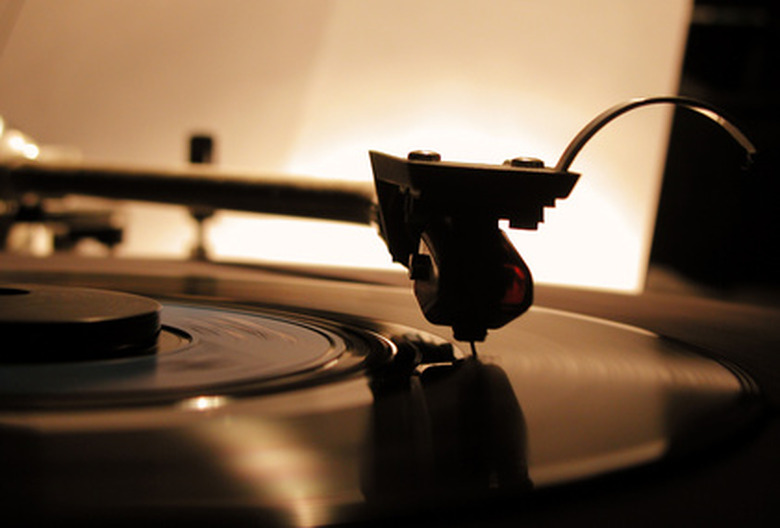How To Make A Record Player For A Kid's Science Project
Record players, though still produced, are difficult to find and often expensive. Though a homemade record player is no substitute for the "real thing," making your own player is an impressive way to share the days of analog with schoolchildren. Students can also demonstrate how analog records work for a science project.
Step 1
Roll a piece of construction paper into a cone. This cone will act as the speaker for your record player.
Step 2
Glue a needle, point side out, inside the point of your cone so that only ¼ centimeter sticks out.
Step 3
Hold a pencil vertically. Put it through the hole of the record.
Step 4
Touch the point of your needle to the edge of your record. Hold the needle so that the angle between the surface of the record and the needle is 45 degrees.
Step 5
Spin the record continuously while holding the needle in place. It may be easier to have a helper either spin the record or hold the needle.
Things Needed
- Construction paper
- Super Glue
- Needle
- Pencil
- 33 1/3 RPM record
TL;DR (Too Long; Didn't Read)
Older records work best with this project because they have wider grooves and are more durable.
Warning
Sewing needles may damage your record. It is best to try this experiment on a record you don't care is ruined.
References
Cite This Article
MLA
Sloane, Christina. "How To Make A Record Player For A Kid's Science Project" sciencing.com, https://www.sciencing.com/how-to-make-a-record-player-for-a-kids-science-project-12746350/. 8 January 2011.
APA
Sloane, Christina. (2011, January 8). How To Make A Record Player For A Kid's Science Project. sciencing.com. Retrieved from https://www.sciencing.com/how-to-make-a-record-player-for-a-kids-science-project-12746350/
Chicago
Sloane, Christina. How To Make A Record Player For A Kid's Science Project last modified August 30, 2022. https://www.sciencing.com/how-to-make-a-record-player-for-a-kids-science-project-12746350/
